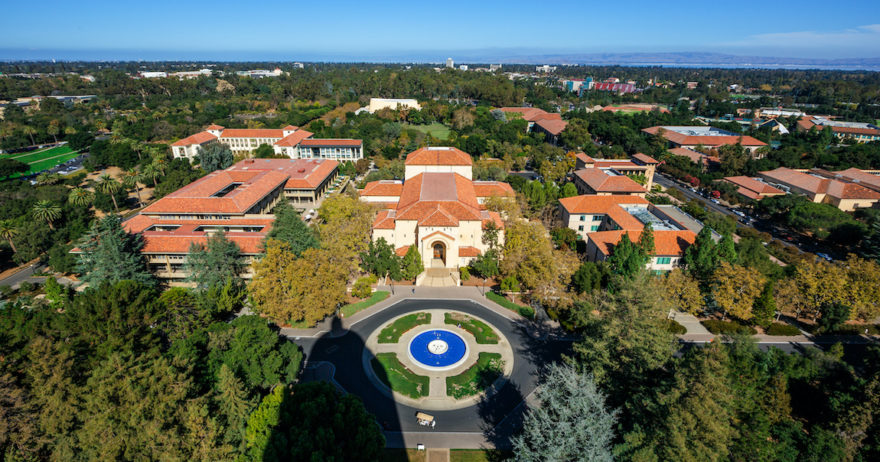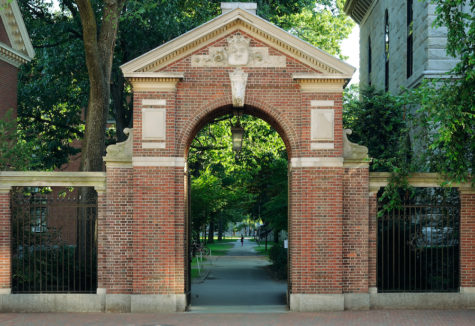- Blog
- > College Admissions
Stanford Acceptance Rate & Admission Requirements (Complete Guide)

Situated in beautiful Palo Alto, California, and within minutes of the innovation hub in Silicon Valley and the cultural epicenter of San Francisco, Stanford has become one of the most highly regarded universities in the world. Today, thousands of eager high school students apply, seeking the profound social and academic enrichment of its extensive resources, close connections to the nearby tech world, and the engaged, ambitious student body.
Is your SAT or ACT score high enough to get into Stanford? What about your high school GPA? The admissions process at Ivy League schools seems hard to understand. How do schools like Stanford choose who to accept? What can you do to improve your chances? Raise your test scores? Do more extracurriculars? Apply early action?
Below, we’ve condensed everything we know about the Stanford University admissions process. Read on to find out if you’re a competitive applicant and tips to lift your chances of going from applicant to admitted student.
Stanford Acceptance Rate
You’re right about one thing: Stanford is a highly selective school. In 2018, the overall admissions rate at Stanford was only 4.3%, meaning admissions officers rejected nearly 96 out of every 100 students who applied. Moreover, as we’ve written elsewhere, that overall rate includes Stanford’s early action acceptance rate, which is higher than the Stanford’s regular decision rate. That means that in reality, the regular admission rate at Stanford closer to 3%!
In addition, the college admissions process gets more competitive every year, as more domestic and international students alike apply. That means you need to really stand out. These admissions statistics are a little scary, but don’t fear. Once you know what Stanford is looking for, you can better tailor your college application to meet their expectations.
Stanford GPA Requirements
Let’s start with your grade point average (GPA). Stanford admissions officers will calculate based on your high school transcript, which you’ll submit with your overall application.
Last year, the reported average GPA of an admitted high school student at Stanford was a 3.95 out of 4.0 unweighted GPA. That means that high school students need nearly straight As in every class to gain admission to Stanford.
SAT and ACT Requirements
Stanford, like its Ivy League brethren and most other colleges, requires either the SAT or ACT for admission. They have no preference between them, so choose the test that’s a better fit for you, thoroughly prepare for it, and plan to take it multiple times.
The average SAT score totals and ACT composite scores for students admitted to Stanford varies (see table below). However, keep in mind that unless you fall into certain privileged categories (athletes, legacies, donors, etc.), your SAT/ACT score should be closer to the 75th percentile than the 25th percentile to ensure you’re maximizing your chances of admission.
Stanford Average ACT and SAT Scores
| Test/Section | 25th Percentile | 50th Percentile (Mean) | 75th Percentile |
| SAT Total | 1460 | 1510 | 1580 |
| SAT Reading | 700 | 730 | 770 |
| SAT Math | 720 | 750 | 800 |
| ACT Composite | 32 | 33 | 35 |
Note that Stanford University “superscores” the SAT. That means they will mix and match section scores from different days for both tests and come up with the highest total or composite score. They do not superscore the ACT, however; they will focus on students’ single highest composite score (though they will note higher section scores as they consider a student’s standardized testing profile).
SAT Subject Tests
Finally, Stanford recommends that applicants submit two SAT II, or subject test, scores. While these tests are not explicitly required by Stanford, you should submit your scores on your SAT subject tests if they’re in the 90th percentile or higher.
Use percentiles, not scores, to make this decision, because the scores are scaled based on who takes the test that year. For instance, a 750 on the English Language and Literature test is seen as a much higher score than a 750 on the Math 2 SAT Subject Test.
Other Stanford Application Requirements
Those are the overall academic requirements for Stanford. But what about everything else? In addition to evaluating your academics, the admissions officers at Stanford want to hear about all the other parts of your life. In addition to reporting your grades and SAT scores, there are a few more key aspects of the Stanford admissions process:
• SAT and two SAT Subject Test Scores, or ACT scores
• Two teacher recommendations and one counselor letter
• A high school transcript
• A mid-year report
• A $90 application fee or fee waiver
• A completed Common Application
• Stanford-specific essays
Letters of Recommendation
First, to understand who you are as a student beyond your transcripts and test scores, Stanford will ask for letters of recommendation from two of your teachers as well as your school counselor. When considering who to ask, don’t focus only on the teachers who gave you the best grades, but the people who know you well and will write great, personal letters.
Counselor Recommendation & School Documents
Second, in addition to your transcript and his/her letter, your school counselor will submit a few additional documents:
• A school report, which your school’s demographics and its most salient features (like if there’s a limit on how many AP classes you can take)
• A mid-year report, which will update Stanford on your senior year grades that might not be officially posted when you apply.
These will also help Stanford contextualize your application.
The Common Application & Essay
Then, you’ll need to submit the Common Application (or Coalition Application). When you apply to college, you’ll get to know this online interface well; it’ll be where you go to apply not only to Stanford, but to Yale, Brown, and Harvard, too! Much of the Common Application is standard demographic and educational information. You’ll also fill out an “activities” section, where you’ll detail all your extracurricular involvement.
On top of that information, the Common Application asks for a single personal essay that will be submitted to all your schools. This essay, of 650 words or less, is your chance to tell Stanford and the rest of your schools about an important moment or theme in your life. A strong Common App essay is key to a competitive application, so plan to revise it several times!
Supplemental Essays
Lastly, in addition to the main essay, Stanford and many other schools require additional, school-specific essays. These can change from year to year, but generally they ask about your interest in the school and/or more details about what you’ve already done. Last year, Stanford University asked eleven short-answer essay questions, which ranged in length from a few sentences to multiple pages. Some of the topics were:
• What is the most significant challenge that society faces today?
• How did you spend your last two summers?
• What historical moment or event do you wish you could have witnessed?
Having a strong application strategy to get these essays drafted, revised, and done, as well as a coherent narrative to present in them, is essential for admission to selective schools like Stanford and similar, Ivy League institutions.
Application Fee
Finally, you’ll need to pay a $90 application fee to submit your application through these online interfaces. These fees can be waived by showing financial hardship.
Application Deadlines
As you put together all these materials, keep in mind the eventual deadlines! Everything for Stanford must be submitted by:
• November 1 for Single-Choice Early Action
• January 1 for Regular Decision
Early Action decisions are released in mid-December, and Regular Decision applicants will hear online by April. Admitted students must decide by May 1 if they will attend.
Stanford Demographics
Last year’s entering freshman class at Stanford University (the Class of 2023) hailed from a wide variety of schools, states, countries, and demographic backgrounds:
Within the most recent incoming class:
• 63 home countries and 50 US states are represented
• 11.4% are international citizens representing 60 countries
• 17.5% are first generation college students
Similarly, Stanford draws on a diverse applicant pool in its admissions decisions. The gender and ethnic breakdown of the most recent freshman class was:
• Women: 49%
• Men: 51%
• Asian American: 20%
• Hispanic/Latino: 17%
• African American: 6%
• Multiracial (non-Hispanic): 9%
• American Indian: 2%
Final Thoughts about Applying to Stanford
The final thing to keep in mind is that Stanford University is so selective, that even if you’re a competitive applicant there, it makes sense to apply to similar schools as well, like Yale University, Harvard University, and Princeton University.
Good luck! And remember, if you need advice on any of this—how to understand your GPA, when to take the SAT or ACT, what extracurricular activities to do, how to spend your summers, or what on earth to write all those essays about—you know where to find us!
Subscribe to our newsletter for college admissions news
Related articles from the Spark Admissions blog

Which Colleges and Universities Will Be Test-Optional in 2023-2024?
Here is an up-to-date list of every school that will be test-optional, test-flexible, or test-blind in 2023-2024.
Categories: College Admissions
Read More
Surprising Admissions Trends at U.S. Colleges in 2021-2022
This spring, many students and families discovered that schools that could once have been considered relatively safe bets for strong students were no longer sure things. Here, we’ve highlighted some of the schools that saw a particularly noteworthy drop in their admission rates.
Categories: College Admissions
Read More
Changes in Admission at Top Boston-Area Schools
In recent years, colleges and universities in and around Boston (including those in its neighboring suburbs) have received a growing number of applications, and as a result, falling admission rates.
Categories: College Admissions
Read More